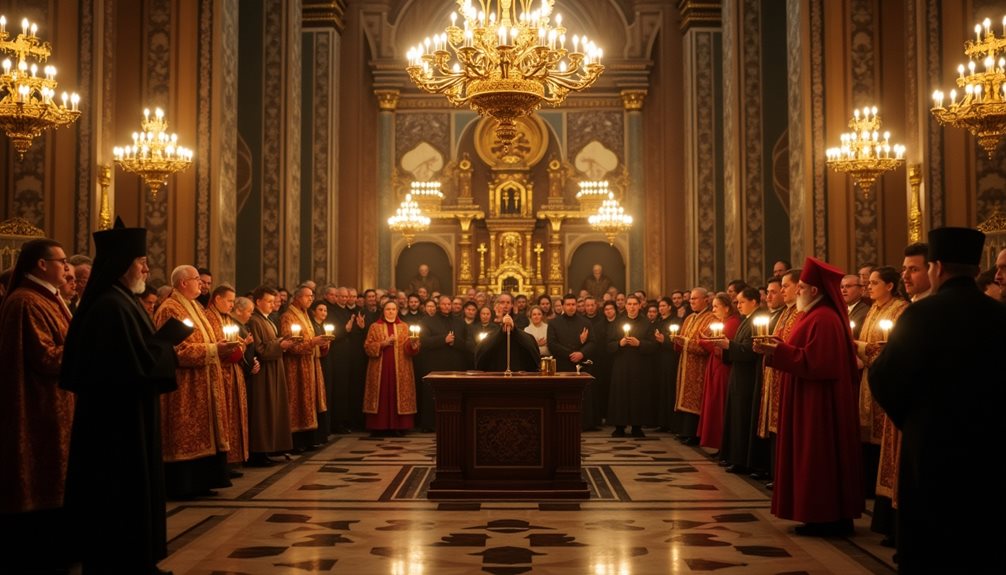Pavel Yablochkov emerged as a pivotal figure in the evolution of electric lighting during the late 19th century. His invention, the Yablochkov candle, marked a significant shift from gas lighting to electric illumination across major European cities. This innovation not only illuminated iconic landmarks but also sparked a transformation in urban life. However, the journey was not without its challenges, raising questions about the sustainability of his invention and its long-term impact on electrical engineering.
Early Life and Education of Pavel Yablochkov

Pavel Yablochkov was born in 1847 in Serdobsk, a town within the Saratov Governorate of the Russian Empire. From a young age, he exhibited a natural curiosity about how things worked, often taking apart household gadgets and experimenting with simple mechanical devices. This early fascination was encouraged by his family, who recognized his talent and provided him with books and materials to nurture his interest.
Yablochkov’s formal education began at the Saratov Gymnasium, where he excelled in mathematics and the sciences. His teachers noted his exceptional analytical skills and inventive thinking, both of which set him apart from his peers. It was during these formative years that Yablochkov became particularly interested in the practical applications of electricity—a field that was just beginning to emerge as a discipline in Russia.
In 1863, seeking to further his technical education, Yablochkov enrolled at the Nikolaev Engineering Academy (today known as the Military Engineering-Technical University) in St. Petersburg. The academy was renowned for its rigorous curriculum, blending theoretical instruction with hands-on training in engineering and technology. Here, Yablochkov immersed himself in studies of physics, chemistry, and advanced mathematics, while also gaining valuable experience with electrical apparatus and experimental setups.
Despite the promising prospects of a military engineering career, Yablochkov found himself increasingly drawn to scientific exploration and innovation. He was particularly inspired by the pioneering electrical experiments of European inventors, such as Michael Faraday and André-Marie Ampère. After completing his studies at the academy, Yablochkov made the bold decision to leave military service behind. He dedicated himself fully to the development of electrical technology, a choice that would lead to his most significant contributions—including the invention of the Yablochkov candle, an early and influential electric arc lamp.
Yablochkov’s early life and educational journey reflect not only his personal ambition but also the spirit of scientific inquiry that characterized the late 19th century. His decision to pursue electrical engineering over a conventional military path set the stage for innovations that would have a lasting impact on the development of electric lighting and power technology worldwide.
![]()
Pavel Yablochkov: The Inventor Who Lit Europe
Pavel Nikolayevich Yablochkov was a pioneering electrical engineer whose inventions transformed city life across Europe in the late 19th century. Building on his solid education and early experiences, Yablochkov focused his efforts on the emerging field of electrical engineering.
Inspired by the brilliant electric arc seen when coal electrodes were used in an electrolytic bath, Yablochkov developed the “Yablochkov candle,” a revolutionary arc lamp that required no regulator. First demonstrated at the Exhibition of Physical Apparatus in London in 1876, his lamp initially burned for about an hour—a duration he soon doubled through improvements.
The Yablochkov candle marked a major leap forward in electric lighting, offering a practical and efficient solution that helped illuminate cities and redefine urban life after dark. His visionary work not only advanced technology but also shaped the way people experienced their world at night.
The Invention of the Yablochkov Candle
Pavel Yablochkov’s greatest achievement was inventing the Yablochkov candle in 1876, a new type of electric arc lamp that changed lighting forever. Before his invention, arc lamps worked by creating a spark between two carbon rods placed end-to-end, but the rods burned away unevenly and needed frequent adjustments with complicated machinery to keep the light steady. This made early electric lighting unreliable and hard to maintain.
Yablochkov solved this problem with a much simpler design. Instead of arranging the rods end-to-end, he placed two carbon rods side by side, separated by a thin layer of plaster of Paris or similar insulating material. A small conducting fuse at the top started the lamp; when electricity was applied, it vaporized and created an arc between the rods. As the lamp burned, both the carbon rods and the insulating layer were consumed at roughly the same rate, so the distance between the rods stayed almost constant. This meant no mechanical parts were needed to keep the light burning steadily. Each Yablochkov candle could give off a bright, white light for about 1.5 to 2 hours before it needed to be replaced.
The Yablochkov candle was much brighter and whiter than gas lamps, which produced a dimmer yellow light. Its simple design also made it cheaper and easier to use, and several candles could be connected together to light large spaces like streets or theaters. The first big public demonstration of the Yablochkov candle was in Paris in 1878, where it was used to light up major avenues and impressed people from around the world. This invention made electric lighting practical for everyday use and helped speed up the spread of electric lights across Europe. The Yablochkov candle stands out as a key step in making electric lighting reliable and accessible.
Transforming European Nightlife
The late 19th century was a period of dramatic change for urban Europe, and one of the most striking symbols of this transformation was the advent of electric lighting. At the center of this revolution stood the Yablochkov candle—an innovative arc lamp invented by Russian engineer Pavel Yablochkov in 1876. Its introduction marked a turning point in the modernization of European cities and forever changed the landscape of nightlife and public spaces.
Before the Yablochkov candle, gas lamps dominated city streets and public venues, but they were fraught with drawbacks: frequent maintenance, inconsistent illumination, and a persistent risk of fire. Yablochkov’s invention offered a bold alternative. Unlike earlier arc lamps that required complex mechanisms to regulate the carbon electrodes, the Yablochkov candle used two parallel carbon rods separated by an insulating material (such as plaster of Paris), which burned down simultaneously, maintaining a consistent arc without adjustment.
This simplicity made the candle more reliable and easier to use than its predecessors. Moreover, it was bright—significantly brighter than gas lamps—and could illuminate large areas, which was especially appealing to city planners and business owners eager to enhance both safety and spectacle.
Landmark Installations and Public Reception
The world was introduced to the Yablochkov candle at the 1878 Paris Exposition Universelle, where it became an instant sensation. The “Avenue de l’Opéra,” “Place de l’Opéra,” and sections of the “Galeries Lafayette” in Paris were among the first public spaces to be dazzlingly lit by electric light.
Parisians were captivated. For the first time, nighttime city life was not constrained by dim or flickering gas lamps. Paris’s illuminated boulevards earned it the nickname “la ville lumière”—the city of light—a moniker that endures to this day.
Other cities soon followed suit:
- Paris Opera House: Became one of the first major buildings in the world to be lit electrically, setting a precedent for theaters and concert halls.
- Department Stores & Train Stations: Retailers and railway companies quickly recognized the commercial advantages of well-lit interiors, drawing in more customers and increasing safety.
- International Expansion: The collaboration with engineer Auguste Denayrouze helped promote widespread adoption. Installations appeared in London, St. Petersburg, and other major European cities, signaling a shift towards electrification across the continent.
Symbol of Modernity
The Yablochkov candle symbolized progress and modernity. It represented not just a technological innovation but also a cultural shift—cities became safer, more vibrant after dark, and more attractive to residents and visitors alike. The sight of brilliantly lit streets and landmarks helped foster civic pride and reinforced a sense of urban identity.
Technical Challenges and Decline
Despite its initial success, the Yablochkov candle faced significant limitations:
- Short Lifespan: Each pair of carbon rods lasted only a few hours before needing replacement.
- High Power Consumption: Early arc lamps drew far more electricity than later incandescent bulbs, making them expensive to operate.
- Noise and Odor: The electrical arc created a loud humming sound and sometimes produced unpleasant odors due to vaporizing carbon compounds.
- Production Hurdles: Manufacturing challenges and dependence on imported components limited scalability.
- Competition: The arrival of more efficient incandescent lamps—most notably from Thomas Edison and Alexander Lodygin—rapidly eclipsed the arc lamp. Incandescent bulbs offered longer life, quieter operation, lower power usage, and greater reliability.
Additionally, many municipal authorities were hesitant to move away from established gas lighting infrastructure, further slowing adoption.
![]()
Lasting Legacy and Contributions to Electrical Engineering
Pavel Yablochkov’s influence on electrical engineering remains significant, even though his most famous invention—the Yablochkov candle—was eventually replaced by more efficient technologies like the incandescent bulb. His work proved that electric lighting was not just possible but practical on a large scale, dramatically accelerating the electrification of cities across Europe and beyond.
Yablochkov’s arc lamp, while eventually surpassed, fundamentally changed how societies thought about energy and life after dark. Its successful deployment in public spaces demonstrated the power of electric light to transform cities, stimulate economies, and improve everyday life. The era of arc lamps set a precedent for modern urban infrastructure, showing that technological innovation could redefine city life and pave the way for future advancements.
Notable Facts
- Knighted by France: Yablochkov was awarded the Legion of Honour for his groundbreaking work.
- Patent Battles: He faced numerous international patent disputes, typical for inventors of his time.
- Lost Fortune: Despite his fame, much of his wealth went into ongoing research and development.
An Interesting Side Note
The term “candlepower,” still used today to measure light intensity, gained traction during the intense innovation of this period. While not directly linked to Yablochkov’s invention, his pioneering work helped popularize the science and measurement of artificial illumination.
Enduring Influence
By introducing automatic element replacement and championing electric lighting in major cities, Yablochkov challenged the dominance of gas lighting and inspired generations of inventors. His legacy is a testament to the transformative power of electrical engineering—a reminder that one bright idea can illuminate not just streets, but also the path to future progress.




